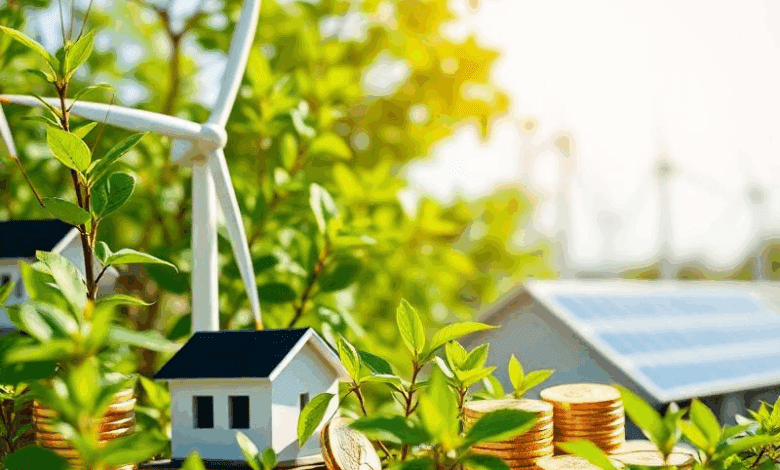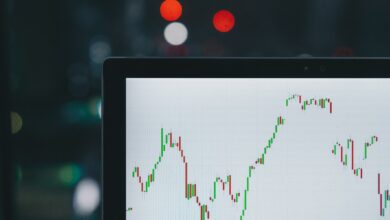Renewable energy – clean power investment strategies

Allocating capital toward wind and solar generation assets with integrated storage solutions offers a direct path to enhancing grid resilience and maximizing returns. Current market data shows utility-scale solar projects yield average internal rates of return (IRR) between 8% and 12%, while onshore wind installations frequently reach 7% to 10% IRR, depending on geographic location and regulatory frameworks.
Optimizing portfolio exposure requires balancing intermittent generation sources with advanced battery storage or pumped hydro facilities to mitigate volatility and maintain stable supply. Investment approaches that incorporate hybrid systems demonstrate improved dispatchability, reducing curtailment risks by up to 15%, which translates into higher net present values (NPV).
Regulatory incentives such as production tax credits (PTCs) and accelerated depreciation remain critical drivers in project viability, especially in markets undergoing grid modernization. Strategic deployment near load centers minimizes transmission losses and capital expenditure, further improving asset-level economics. Detailed scenario modeling suggests prioritizing jurisdictions with streamlined permitting processes can shorten project timelines by approximately 6 months, accelerating cash flow realization.
Clean Power Investment Insights: Optimizing Capital Allocation in Sustainable Generation
Prioritize asset allocation towards large-scale solar and wind facilities integrated with advanced storage solutions to enhance grid reliability and maximize return on equity. Data from the International Renewable Energy Agency (IRENA) shows that utility-scale photovoltaic projects have decreased levelized cost of electricity (LCOE) by approximately 82% since 2010, making them competitive alternatives to fossil fuel-based generation. Simultaneously, modern wind turbines, especially offshore installations, deliver capacity factors exceeding 50%, ensuring consistent output that supports stable cash flows.
Incorporating battery energy storage systems (BESS) into renewable setups mitigates intermittency risks inherent to variable generation sources. Lithium-ion storage technologies combined with predictive grid management platforms enable dispatch optimization and peak shaving, which enhances asset utilization and market participation. Investors should evaluate projects with integrated storage components carefully, as this integration can improve overall investment internal rates of return (IRR) by up to 3-5 percentage points according to BloombergNEF analyses.
Technical Considerations for Asset Selection
Effective deployment requires thorough assessment of site-specific wind speeds and solar irradiance metrics using historical meteorological data spanning at least ten years. Geographic regions with high solar insolation such as parts of Southern Europe or the southwestern United States offer superior capacity factors above 25% for photovoltaic arrays. Wind farms benefit from locations exhibiting steady anemometric profiles above 7 meters per second at turbine hub heights, optimizing mechanical output.
Grid interconnection infrastructure must be evaluated for congestion risks and curtailment probabilities. Projects situated near substations with robust transmission capacity reduce bottlenecks that negatively impact revenue streams. Additionally, regulatory incentives like feed-in tariffs or tax credits should be factored into financial models, enhancing project bankability. In jurisdictions where demand response markets are active, participation through smart grid-enabled assets presents additional monetization opportunities.
Financial structuring benefits from diversification across multiple clean generation technologies to hedge against resource variability and policy shifts. For example, combining onshore wind portfolios in Northern Europe with solar assets in Mediterranean climates balances seasonal production fluctuations effectively. Institutional investors increasingly favor green bonds and sustainability-linked loans tied to these diversified asset pools due to their lower risk profiles and ESG compliance.
The evolving regulatory environment demands continuous monitoring of subsidy frameworks and carbon pricing mechanisms impacting project economics. Emerging markets demonstrate rapid adoption rates due to supportive policies targeting decarbonization goals aligned with international climate commitments. Investors should leverage blockchain-enabled transparency tools that facilitate real-time performance verification and streamline stakeholder reporting requirements.
A strategic approach combining technical diligence with adaptive financial structures enables capital preservation while capturing upside potential from technological advancements in generation efficiency and storage scalability. Aligning portfolios across geographies and technology types reduces exposure to localized disruptions or policy reversals, fostering resilient long-term value creation within sustainable infrastructure sectors.
Assessing Risk in Renewables
Prioritizing thorough due diligence on asset location and technology type significantly reduces exposure to operational hazards in solar and wind projects. For instance, proximity to unstable weather zones or insufficient sunlight hours can degrade output consistency, impacting revenue streams. Analyzing historical meteorological data alongside advanced forecasting models enables precise evaluation of resource availability, which directly correlates with expected returns.
Integrating distributed generation assets into existing transmission frameworks presents another layer of complexity. Grid stability risks emerge from intermittent supply fluctuations common to photovoltaic arrays and turbine installations. Investors must scrutinize grid interconnection capacity and regulatory protocols to mitigate curtailment events or ancillary service penalties that erode profitability. Case studies from Germany’s Energiewende reveal that inadequate grid upgrades led to substantial bottlenecks, delaying project commissioning and increasing costs.
Technical Considerations Impacting Financial Outcomes
Capital allocation decisions require detailed examination of component degradation rates and maintenance schedules inherent in different technologies. For example, modern monocrystalline panels demonstrate annual efficiency losses around 0.5%, whereas older polysilicon variants may exceed 1%. Similarly, offshore wind turbines encounter accelerated corrosion risk necessitating higher O&M budgets compared to onshore counterparts. These factors influence lifecycle cash flow models and should inform discount rate assumptions.
- Resource variability: Hourly wind speed fluctuations can cause up to 30% deviation in monthly generation forecasts.
- Grid integration: Voltage regulation challenges increase with penetration levels beyond 20% in local networks.
- Technology lifespan: Typical warranty periods span 20-25 years but real-world performance often extends beyond initial estimates.
Diversification across geographic regions and technology platforms enhances resilience against localized disruptions or policy shifts. For example, blending utility-scale solar farms in arid zones with offshore wind installations along coastal areas spreads climatic exposure and regulatory risk. This portfolio approach aligns with risk-adjusted return optimization by smoothing cash flow volatility inherent to singular asset classes.
The evolving financial frameworks surrounding carbon credits and renewable certificates also warrant close attention. Markets such as the EU ETS (Emission Trading System) have introduced variable pricing mechanisms that affect project economics tied to emission reduction incentives. Understanding these dynamics allows for strategic positioning within compliance regimes, potentially unlocking additional revenue streams or hedging cost exposures over project lifetimes.
A nuanced understanding of these technical and market variables enables informed capital deployment decisions within the sector focused on sustainable electricity generation alternatives. By applying rigorous quantitative analysis combined with strategic diversification, stakeholders can better navigate the multifaceted risk landscape while aligning portfolios with global decarbonization trajectories and fiscal prudence principles.
Choosing High-Yield Technologies
Targeting photovoltaic systems with high conversion efficiency remains a primary recommendation for maximizing returns in solar-based ventures. Modern monocrystalline panels achieve efficiencies exceeding 22%, outperforming older polycrystalline modules by roughly 15%. This gap directly influences yield per installed capacity, particularly in regions with high solar irradiance, such as southern Europe and parts of the Middle East. Incorporating bifacial panels can further augment output by harvesting reflected light, boosting energy generation up to 11% compared to traditional designs. These technical parameters translate into shorter payback periods and increased net cash flow when integrated within distributed generation frameworks connected to local grids.
Onshore wind turbines with rated capacities between 3 to 5 MW currently dominate due to their balance of scalability and cost-effectiveness. Advances in blade aerodynamics and taller tower structures have increased capacity factors from historical averages near 25% to upwards of 40% in optimal sites. For instance, the Hornsea One offshore project reports capacity utilization rates around 45%, highlighting offshore installations’ potential despite higher initial expenditures. Strategic allocation of capital towards locations exhibiting consistent wind profiles ensures steady operational output, facilitating predictable revenue streams critical for portfolio diversification and risk mitigation.
Grid integration strategies play a pivotal role when selecting technologies with higher yield prospects. Systems equipped with advanced inverter controls enable better synchronization with utility networks, reducing curtailment risks during peak production periods. Additionally, coupling renewable arrays with battery storage solutions enhances dispatchability, allowing surplus generation to be stored and released during demand peaks or grid instability episodes. In markets where dynamic pricing prevails, this flexibility translates into premium tariffs and improved financial metrics over assets lacking such hybridization capabilities.
Financial models incorporating levelized cost of electricity (LCOE) calculations reveal that investments favoring emerging turbine designs or next-generation solar cells–such as perovskite tandem modules–offer substantial long-term advantages despite higher upfront capital requirements. Case studies from recent auctions indicate bids reflecting LCOEs below $30/MWh for onshore wind projects deploying larger rotors and optimized siting methodologies. Investors must weigh technology maturity against innovation potential while considering regulatory frameworks incentivizing decarbonization targets through feed-in tariffs or carbon credit mechanisms that directly impact asset valuation and return profiles.
Portfolio Diversification Tactics in Clean Power Assets
Allocating capital across a blend of solar, wind, and storage technologies enhances portfolio resilience against sector-specific volatility. Solar photovoltaic projects, characterized by steady daytime output and declining Levelized Cost of Electricity (LCOE), provide reliable revenue streams. Wind assets complement this with variable generation profiles influenced by regional meteorological patterns, particularly strong in offshore installations. Incorporating grid-scale battery storage mitigates intermittency risks inherent to both sources by enabling load shifting and frequency regulation services.
Strategic exposure to multiple segments within the sustainable electricity sector reduces correlation risk and improves overall yield stability. For example, combining utility-scale solar farms in sun-dense regions such as the southwestern United States with onshore wind projects located in the Midwest leverages geographic diversification benefits. This spatial spread also aligns with differing regulatory frameworks, tariff structures, and incentive schemes, which can buffer against localized policy shifts impacting asset performance.
Diversification Approaches Using Technical and Market Data
An effective methodology involves weighting asset classes based on capacity factors and projected technological advancements. Solar modules currently achieve capacity factors around 20-25%, whereas modern wind turbines average between 35-45%. Battery storage systems are evaluated through duration metrics (typically 4-6 hours) paired with round-trip efficiency rates exceeding 85%. Prioritizing investments that optimize these parameters creates a balanced portfolio capable of delivering consistent returns under variable conditions.
Case studies from European grid operators demonstrate that integrating hybrid plants–solar plus storage or wind coupled with energy management systems–enhances dispatchability while reducing curtailment losses. Such configurations improve utilization rates beyond standalone installations by aligning production profiles closer to demand peaks. Moreover, participation in ancillary service markets supplements income streams, providing additional diversification through revenue source multiplicity.
- Solar assets: stable daytime generation with predictable degradation curves;
- Wind farms: higher variability but increased capacity factors in optimal sites;
- Storage solutions: enable temporal arbitrage and grid support functionalities.
Risk mitigation further extends to incorporating emerging technologies like green hydrogen production powered by excess renewable generation. This fosters circular integration within the ecosystem while opening novel valuation avenues linked to decarbonization targets. Portfolio managers should systematically monitor regulatory developments influencing grid interconnection standards and market participation rules to adjust allocations dynamically.
The dynamic interplay between asset types requires continuous data-driven adjustments informed by market prices for electricity futures, capacity auctions, and ancillary services remuneration. Advanced analytics platforms utilizing real-time telemetry can identify correlations or emerging trends signaling when reallocations might enhance portfolio robustness or capture upside potential amid shifting economic conditions.
A diversified approach grounded in technical specifications and market intelligence offers superior risk-adjusted performance compared to concentrated positions in singular technology classes or geographic zones. Investors seeking long-term exposure should prioritize flexibility by including assets capable of adapting to evolving grid demands while maintaining operational efficiency across varying climatic scenarios.
Regulatory Impact on Returns
Optimizing returns in the context of clean power deployment requires close alignment with evolving policy frameworks that increasingly govern storage, grid integration, and generation assets like solar and wind. Regulatory mechanisms–such as capacity payments, grid access rules, and tax incentives–directly influence asset valuation by modulating revenue certainty and operational flexibility. For instance, jurisdictions implementing time-of-use tariffs combined with supportive storage regulations enable enhanced arbitrage opportunities, significantly improving project IRRs.
Furthermore, the interaction between curtailment policies and interconnection standards determines how effectively intermittent resources contribute to overall system stability. Investors must rigorously evaluate these parameters alongside capital cost trajectories to refine portfolio allocation models. Emerging regulatory trends suggest a shift towards market designs that reward flexibility and decentralized resource participation, particularly through blockchain-enabled energy markets that facilitate peer-to-peer trading and transparent settlement.
Key Technical Insights and Forward-Looking Implications
- Grid code evolution: Stricter requirements for frequency response and voltage support necessitate advanced inverter functionalities in solar and wind assets, increasing upfront technology expenditure but reducing penalties related to non-compliance.
- Storage incentives: Enhanced subsidies or capacity remuneration for battery installations amplify dispatch optimization potential, translating into higher net present values under scenario analyses incorporating variable load profiles.
- Market coupling: Cross-border harmonization of regulatory standards facilitates smoother integration of renewable generation portfolios across regions, mitigating congestion costs and enhancing liquidity in ancillary service markets.
- Carbon pricing impacts: Strengthening emission reduction mandates elevate the relative attractiveness of low-carbon generation projects vis-à-vis conventional alternatives, directly impacting cost of capital assumptions for long-term financing structures.
The trajectory of governmental frameworks indicates increasing sophistication in aligning financial returns with grid reliability imperatives. Strategic investment approaches must incorporate dynamic regulatory risk assessments supported by real-time data analytics platforms to anticipate policy shifts before they materialize in market fundamentals. Blockchain-based registries promise enhanced transparency for compliance verification while unlocking novel financing models such as tokenized asset ownership that can democratize participation in large-scale solar and wind developments.
Ultimately, capital allocation decisions grounded in granular understanding of jurisdiction-specific regulatory nuances will outperform indiscriminate exposure strategies. As markets progress towards decentralized architectures integrating distributed storage with variable generation sources, investors positioned at this intersection will capture asymmetric upside potentials while mitigating downside volatility linked to policy uncertainty.






